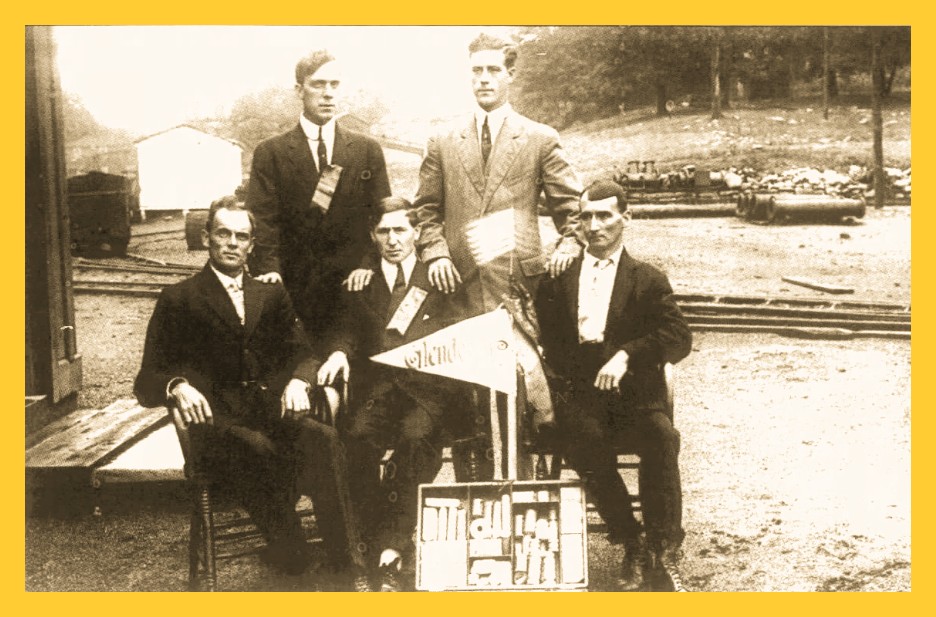A 1905 photograph of the winning first aid team from the Glendower Colliery. Competition meets were held among collieries to determine who had the best first aid team.
From a series of articles that appeared in the Pottsville Republican and Herald in 1997:
The Glendower Colliery was on the south side of the Heckscherville Valley between Glen Carbon and Mount Pleasant.
The original opening was a water-level tunnel driven 110 feet south to the North Top Split of the Mammoth Vein by Thomas E. Schollenberger in 1856. From this point, 2,000 feet of gangway had been driven westward by the time the colliery was abandoned.
In 1860, Schollenberger sank the slope to the first level on the North Dip Split Vein and mined the slope gangways until 1869.
In 1869, miners sank two slopes 1,300 feet west of the old slope, 900 feet deep. One was for hoisting coal and the other, 75 feet east, was for a tender slope on which was erected a powerful bull pump.
From the foot of the hoisting slope, tunnels were driven 290 feet south to the Bottom Split Mammoth Vein and 240 feet north across the basin to the South Dip of the Slope Vein. The total cost of these improvements was $300,000.
Schollenberger operated the newly developed colliery until 1873, when it was purchased by the Philadelphia & Reading Coal & Iron Company, which continued to mine but was restricted on the South Dip Split due to the large bodies of water in the Taylorsville and Monteray colliery workings.
As the North Dip Top Split gangway advanced westward in the basin, anxiety was felt as to the extent of the Monteray workings.
In 1880, two water holes were driven to tap the Monteray water and, in 1882 the company removed the water from the Taylorsville Colliery, which allowed mining to continue on both dips of the basin.
In 1883, a railroad was built to transport the Taylorsville coal to the Richardson Breaker for preparation. But after the completion of the railroad grading, it was abandoned and the colliery remained idle for some time.
In 1889, the Glendower and Taylorsville collieries were operating as one unit, and the company built a new breaker. Coal chutes were erected at the Glendower and Taylorsville slopes and a railroad was constructed to connect the chutes with the new breaker.
In 1895, a new pump slope was sunk 900 feet on the “Lelar” (Middle Split) Vein to replace the old tender slope.
In 1898, a slope was sunk 290 feet on the North Dip of the Buck Mountain Vein and connected with the Taylorsville chute by a railroad about a half mile in length. The two collieries were operated as one until about 1909, when the old North Dip Slope was closed and the Glendower breaker was abandoned. The remaining coal was mined from the Taylorsville South Dip Slope.
In 1912 the Philadelphia & Reading Coal & Iron Company drove a water-level tunnel 250 feet south in the peaked mountain to the North Dip Bottom-Split Vein and in 1915 extended the tunnel to the Buck Mountain Vein.
In 1915, the Glendower Colliery was exhausted and abandoned for Taylorsville Colliery. Mining at the Taylorsville Colliery continued until 1933, when it too was abandoned.
Total shipment of coal from Glendower Colliery was 5,609,110 tons.
_______________________________________________
Article by Frank Blase, Historian, Reading Anthracite Company Historical Library, Pottsville Republican & Herald, September 6, 1997. Obtained from Newspapers.com.
Corrections and additional information should be added as comments to this post.
